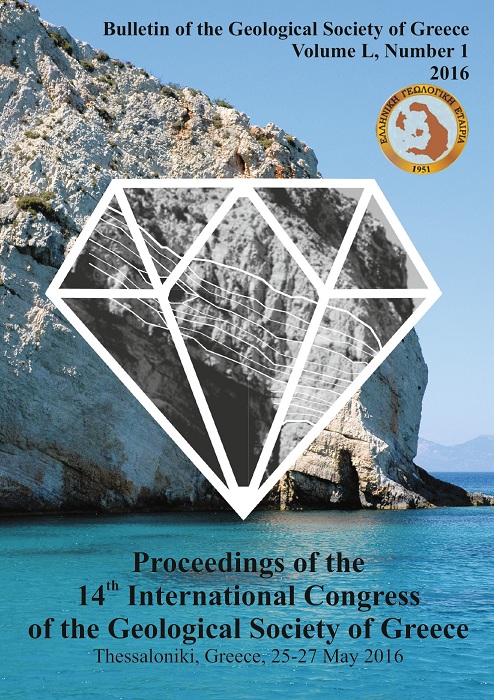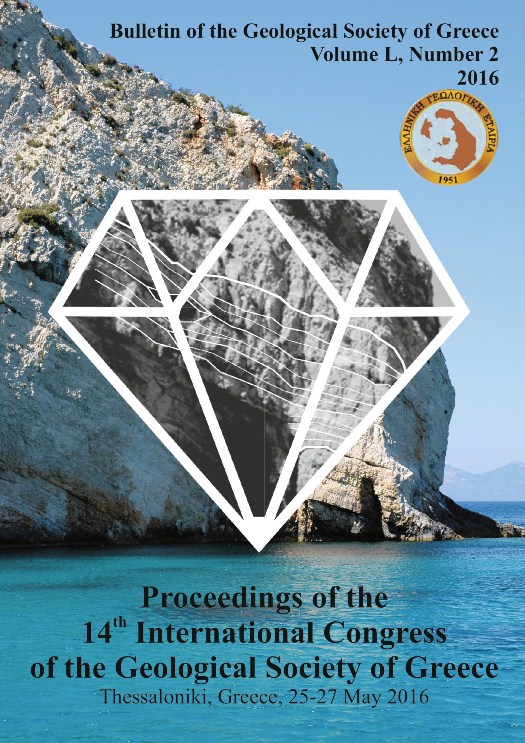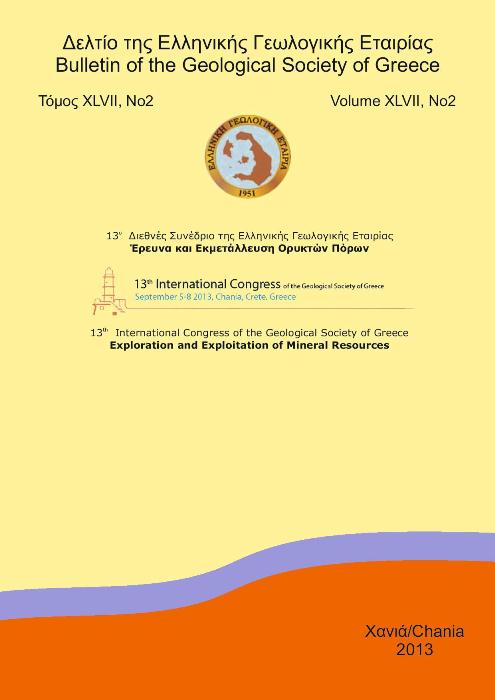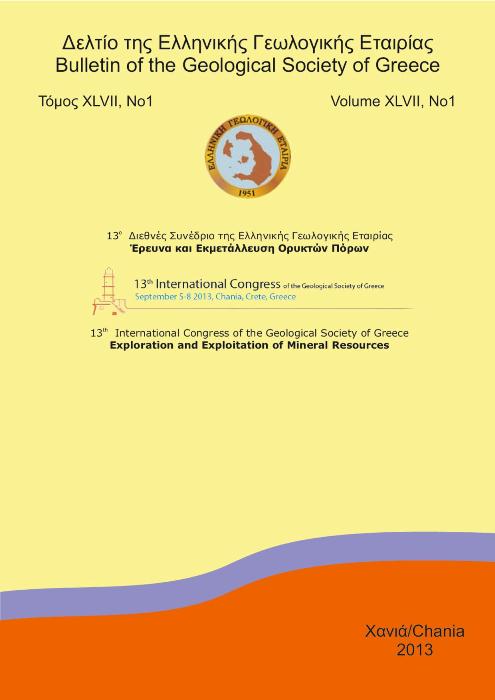CLASSIFICATION OF BUILDING STONES OF THE FRANGOKASTELLO CASTLE, SFAKIA, CRETE

Περίληψη
Το Φραγκοκάστελλο είναι μεσαιωνικό κάστρο που χτίστηκε στο διάστημα 1371-74 από τους Βενετούς σε μια στενή παράκτια ζώνη στο νοτιοανατολικό τμήμα των Λευκών Όρεων, περίπου 12 χιλιόμετρα ανατολικά της Χώρας Σφακίων. Αυτό το τμήμα χαρακτηρίζεται από ένα έντονο μορφολογικό ανάγλυφο που η δημιουργία του καθορίστηκε από την κινητικότητα κανονικών ρηγμάτων με γενικές διευθύνσεις Α-Δ, ΒΒΑ- ΝΝΔ και ΒΒΔ-ΝΝΑ. Την περιοχή ενδιαφέροντος δομούν επιφανειακά ακολουθίες (κυρίως θαλάσσιες) του Τορτονίου, του Κάτω Πλειοκαίνου και του Κατώτερου Πλειστόκαινου. Από το Μέσο Πλειστόκαινο πολλαπλές συμφύσεις αλλουβιακών ριπιδίων κάλυψαν τόσο το αλπικό υπόβαθρο της ευρύτερης περιοχής που αποτελείται από τα μεταμορφωμένα πετρώματα της Ομάδας των Πλακωδών Ασβεστολίθων, της ενότητας Τρυπαλίου και της Φυλλιτικής Χαλαζιακής Σειράς καθώς και τους νεότερους σε ηλικία σχηματισμούς. Στρογγυλωμένα και γωνιώδη κλάσματα πετρωμάτων των αλπικών αλλά και μεταλπικών σχηματισμών που μεταφέρθηκαν και αποτέθηκαν εντός των διαφόρων τμημάτων των αλλουβιακών ριπιδίων αποτέλεσαν τους δομικούς λίθους για της κατασκευή του κάστρου. Το μικροκλίμα της περιοχής και η έντονη τεκτονική δραστηριότητα που σχετίζεται με σχετικά υψηλούς ρυθμούς ανύψωσης των ρηξιτεμαχών στην περιοχή, επηρέασαν καθοριστικά όχι μόνο την στατική του κάστρου αλλά και την αντοχή στην αποσάθρωση των δομικών του λίθων μετά την φυσική αποψίλωση μεγάλων τμημάτων του κονιάματος του εξωτερικού της τοιχοποιίας. Με βάση τα ανωτέρω στόχος της εργασίας αυτής αποτέλεσε αρχικά η συλλογή βιβλιογραφικών δεδομένων σχετικών με την στρωματογραφία και τεκτονική της περιοχής. Τα αποτελέσματα που προέκυψαν συνδυαζόμενα με τα αποτελέσματα από την καταμέρηση και στατιστική επεξεργασία των διαφόρων λιθολογικών τύπων των δομικών υλικών του κάστρου μπορούν να αποτελέσουν δεδομένα εισαγωγής μοντέλων στατικό τητας, στα πλαίσια των προτάσεων συντήρησης και αποκατάστασης του μνημείου.
Λεπτομέρειες άρθρου
- Πώς να δημιουργήσετε Αναφορές
-
Cheimonas, T., Manoutsoglou, E., Stavroulaki, M., & Skoutelis, N. (2016). CLASSIFICATION OF BUILDING STONES OF THE FRANGOKASTELLO CASTLE, SFAKIA, CRETE. Δελτίο της Ελληνικής Γεωλογικής Εταιρείας, 50(1), 209–217. https://doi.org/10.12681/bgsg.11721
- Ενότητα
- Διδακτική των Γεωεπιστημών

Αυτή η εργασία είναι αδειοδοτημένη υπό το CC Αναφορά Δημιουργού – Μη Εμπορική Χρήση 4.0.
Οι συγγραφείς θα πρέπει να είναι σύμφωνοι με τα παρακάτω: Οι συγγραφείς των άρθρων που δημοσιεύονται στο περιοδικό διατηρούν τα δικαιώματα πνευματικής ιδιοκτησίας επί των άρθρων τους, δίνοντας στο περιοδικό το δικαίωμα της πρώτης δημοσίευσης. Άρθρα που δημοσιεύονται στο περιοδικό διατίθενται με άδεια Creative Commons 4.0 Non Commercial και σύμφωνα με την οποία μπορούν να χρησιμοποιούνται ελεύθερα, με αναφορά στο/στη συγγραφέα και στην πρώτη δημοσίευση για μη κερδοσκοπικούς σκοπούς. Οι συγγραφείς μπορούν να: Μοιραστούν — αντιγράψουν και αναδιανέμουν το υλικό με κάθε μέσο και τρόπο, Προσαρμόσουν — αναμείξουν, τροποποιήσουν και δημιουργήσουν πάνω στο υλικό.







